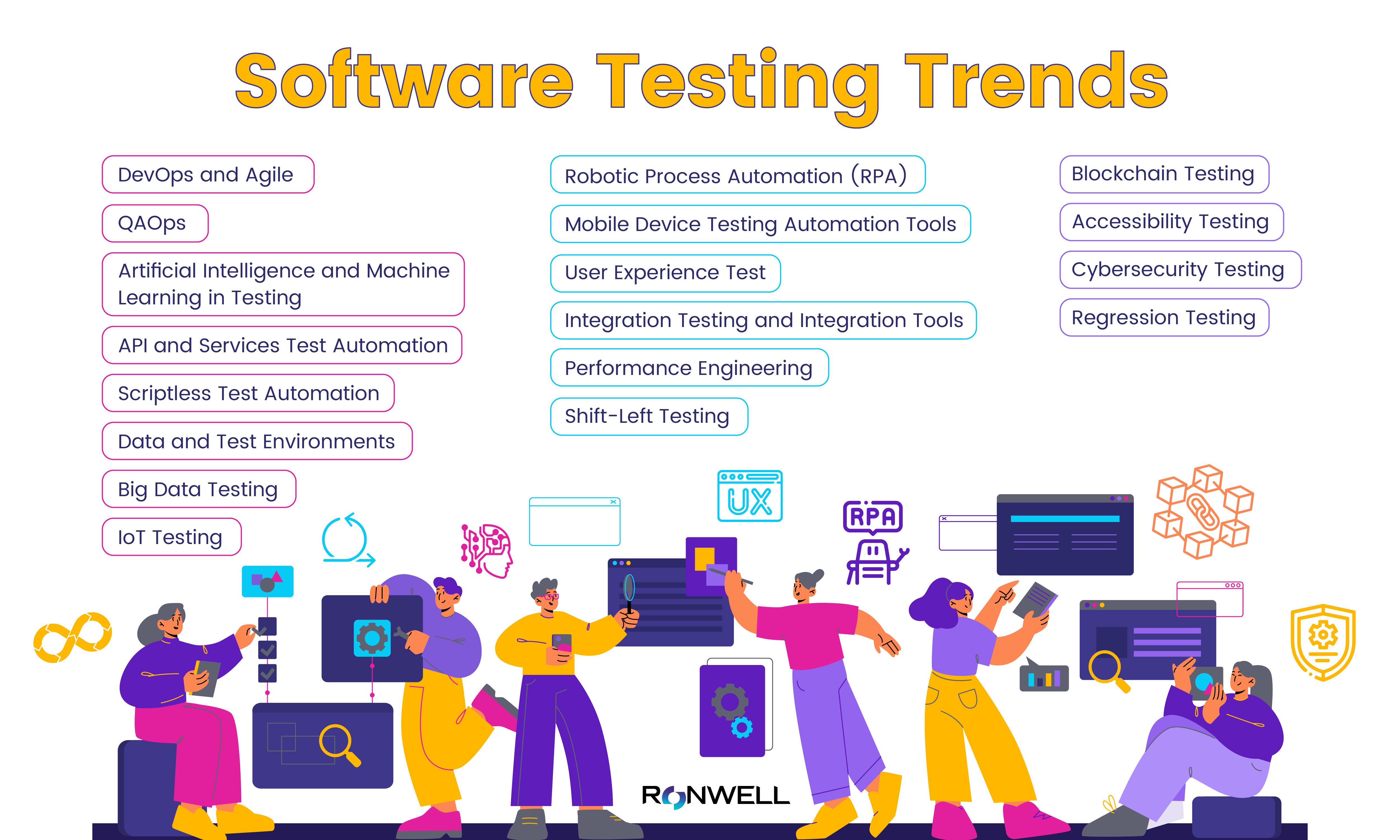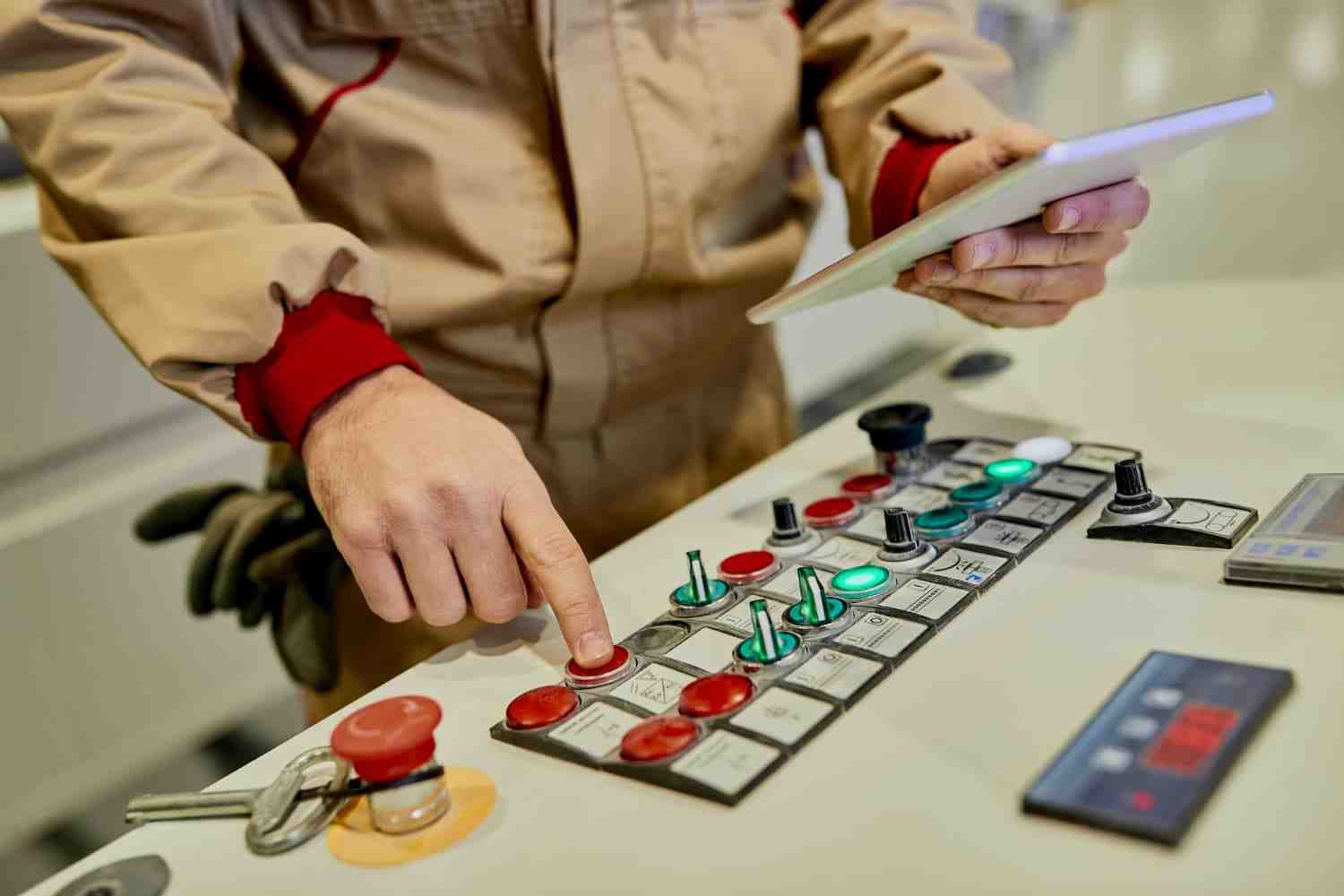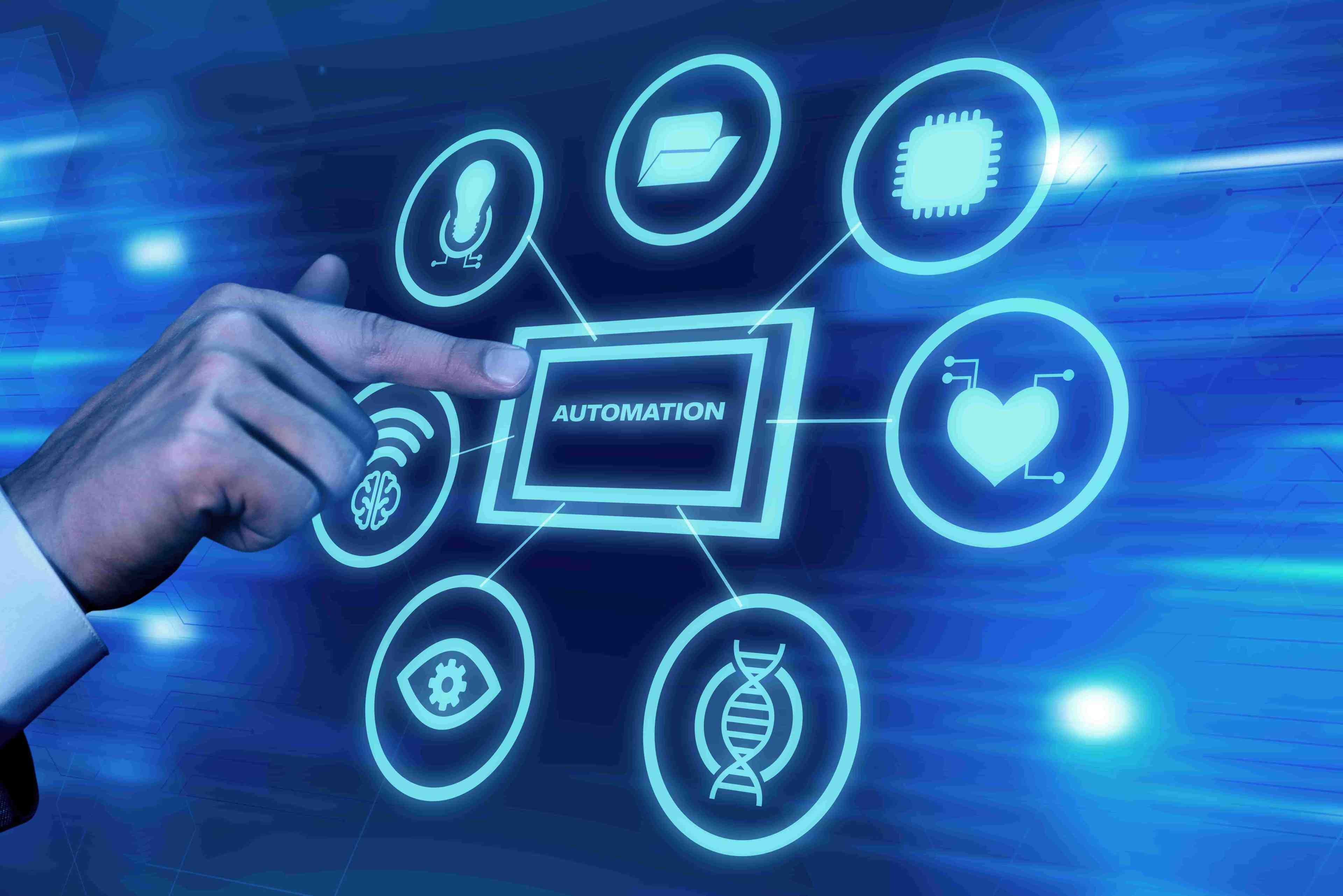

Our Services
Test Automation ServicesAI & Machine LearningBlockchainCRM ConsultingData Science & EngineeringDevOpsDigital MarketingDigital TransformationEmbedded Software DevelopmentERP Consulting ServicesManaged IT ServicesMergers & Acquisitions AdvisoryQA And Testing ServicesRobotic Process Automation SAP Consulting DevelopmentSoftware and Application DevelopmentSQL ConsultingStrategy ConsultingSustainability
- Contact Us
Our Services
- Test Automation Services
- AI & Machine Learning
- Blockchain
- CRM Consulting
- Data Science & Engineering
- DevOps
- Digital Marketing
- Digital Transformation
- Embedded Software Development
- ERP Consulting Services
- Managed IT Services
- Mergers & Acquisitions Advisory
- QA And Testing Services
- Robotic Process Automation
- SAP Consulting Development
- Software and Application Development
- SQL Consulting
- Strategy Consulting
- Sustainability
Insight
Company
Industries
- Contact Us

Top Software Testing Trends to Follow in 2023
Keeping up with software testing trends is important to stay in the industry. We have prepared 2023 software testing trends for you.
- insight
- /
- blog
- /
- software-testing-trends
Software testing has come a long way in the last few years. The advent of new technologies and practices in the information technology sector is now considered a vital part of the development cycle. With the introduction of new technologies, the latest changes have been made to software design, development, testing, and delivery. Cost optimization is the top priority of businesses all over the world. Most IT executives think adopting cutting-edge technologies inside their company is essential.
If an industry or company places a premium on cloud computing and business analytics, it's probably also prioritizing digital transformation.
Quality and dependability are getting a lot of attention, which means that software application errors are decreasing, and security and performance are improving.
Companies today use testing methods like Agile earlier in the software development cycle.
Some businesses also outsource independent testing companies to help them test their software. In this way, testing costs less, and they don't even need to use resources from inside the company.
In the world of software testing, there are several other significant trends. As a result, all software businesses throughout the globe need to adopt the most cutting-edge testing practices to ensure they continue to meet the needs of the modern day.
Top 18 Software Testing Trends In 2023
New software testing methods are emerging in the new year. In 2023, several of the most popular approaches to testing software will include agile techniques, scriptless test automation, and testing on mobile apps, all of which will largely replace traditional manual testing.

Here you can learn more about the top 18 trends in software testing:
DevOps and Agile
Businesses are embracing new and cutting-edge software testing techniques, such as agile and DevOps.
Instead, the most important factor for companies nowadays is the quality of the end product. Agile approaches aid in adopting quickly changing needs, while DevOps aids in the delivery of high-quality output at a fast pace. You can also read our article to learn Agile vs. DevOps: What's the Difference? and Similarities?
DevOps includes techniques, rules, procedures, and technologies that aid in integrating development and operations activities to shorten the time between development and operations. DevOps has become a generally acknowledged option for firms seeking to reduce the time it takes to build, distribute, and operate the software.
The use of both Agile and DevOps allows the teams to build and deliver quality software quicker, which in turn is also known as "Quality of Speed." Over the past five years, there has been a lot of interest in this adoption, and that interest will continue to grow in the years to come.
You can also read our article to learn more about DevOps.
QAOps
QAOps is a new topic that started to be talked about after DevOps.
QAOps or DevTestOps is a mix of Quality Assurance and IT Operations in the Software Development Life Cycle. This ensures that the product will reach customers more quickly without sacrificing quality.
By incorporating QA jobs into the Continuous Integration/Continuous Deployment pipeline, it promotes communication between test engineers and developers.
DevOps methods are already being used by the majority of businesses. In the near future, QAOps will replace whatever comes next.
The tester's job description includes more than just checking things over. Testers are active in all phases of the SDLC. As a QA specialist, you must be well-prepared and understand the QAOps process.
See Also: What Does QA Stand For in Software? (Explained)
Artificial Intelligence and Machine Learning in Testing
Although employing artificial intelligence and machine learning (AI/ML) techniques to solve the issues of software testing is not new in the software research community, current breakthroughs in AI/ML coupled with the availability of vast amounts of data provide new potential to utilize AI/ML in testing.
But AI/ML is still in its early stages when it comes to testing. In AI/ML, organizations will find ways to improve the way they test.
AI and machine learning algorithms are made to make better test cases, test scripts, test data, and reports. Predictive models could help decide where, when, and what to test. Smart analytics and visualization help the teams find bugs, understand test coverage, high-risk areas, and so on.
In the coming years, we hope to see more AI/ML used to solve problems like predicting quality, putting test cases in order of importance, classifying faults, and assigning them.
Read Also: AI in Test Automation: Benefits, Methods & Tools
API and Services Test Automation
A current trend in both Web and mobile app design is to separate the client from the server.
Multiple applications and components make use of the same API and services. Because of these changes, teams will need to do tests on APIs and services separately from the application that will be utilizing them.
There is a significant time and cost savings when testing APIs and services instead of testing the client apps and components. As time goes on, the need for automated testing of APIs and services is expected to rise, maybe surpassing that of user-interface features.
API automation tests need the correct method, tool, and solution now more than ever.
Read Also: 7 Automated Testing Tools For Web Applications in 2023
Scriptless Test Automation
In recent years, most businesses have been introducing products to the market at a rapid speed in a variety of areas. It can be frustrating for testers to have to spend a lot of time learning new, complicated programming languages and working on backlogs at the same time.
Teams don't have to spend a lot of time programming when they use Scriptless Automation Tools. These tools give testers the ability to automate tests that can be used more than once and are reliable. They do this by combining AI and ML algorithms into a self-healing mechanism that gives consistent results.
These resources bridge the technological gap, are simple to use, provide results quickly, and save down on maintenance time and expenses.
Scriptless Test Automation is becoming more and more popular as a trend in software testing. In conclusion, test teams should consider scriptless test automation as an essential technique.
Data and Test Environments
As the number of connected devices continues to rise, more and more software systems are being deployed in widely varying settings. This creates a difficult situation for testing teams as they try to achieve sufficient test coverage. It's true that one of the biggest obstacles to testing in agile projects is a lack of test environments and data.
More and more people will have access to and use cloud-based and containerized testing environments in the future. Some approaches to the problem of insufficient test data include the use of artificial intelligence and machine learning to produce test data and the expansion of data projects.
Big Data Testing
Data is essential to the success or failure of any business. Big data is a term for a large set of data that can't be processed in the usual way. Organizations use large-scale tools, techniques, and frameworks made for "big data" to test these kinds of datasets.
Testing for big data includes testing for data quality, performance, and functionality for both structured and unstructured data.
IoT Testing
IoT testing is one of the latest trends in the software industry that is becoming more popular. The main purpose of IoT testing is to make sure that data sent over the internet is safe.
Some of the most common types of testing in an IoT testing plan are testing for usability, compatibility, data integrity, reliability, and scalability. IoT testing looks at how well IoT devices work, how they function, and how safe they are.
See Also: What is IoT? Internet of Things and How does it work?
Robotic Process Automation (RPA)
Software tasks that run repeatedly without human interaction can be automated using Robotic Process Automation.
Bots are specialized computer programs that are used to do certain things on a system. For example, they can change the quantity, figure out the price, etc.
We predict that by 2023, the use of robotic process automation in software testing will have become more widespread.
Research and market studies show that RPA will bring in about $3.4 billion in sales by 2027. With a growth rate of 28.2% from one year to the next, RPA is always the first choice for automating boring tasks.
RPA writes down the tester's actions for the first time to keep track of what needs to be done. RPA then uses AI and machine learning to run multiple scenarios that all use the same actions on the screen. Since it is automatic, it saves time and resources for the company.
RPA tools are mostly used in different industries, such as finance, banking, health care, customer service, etc.
Mobile Device Testing Automation Tools
62% of all website traffic comes from mobile devices, which are taking over the world. So, it shouldn't be a surprise that one of the biggest testing trends for 2023 is testing on mobile devices. Even if you're not making a mobile-only app, you can be sure that your customers will want to use your software on their phones or tablets.
With automation tools for mobile app testing, it's easy to see if your software works on both Android and iOS devices.
User Experience Test
UX is one of the most important things that any software product needs to have. No matter if you're a software developer or just a simple user, all of the apps must be easy to use. The company wants to make a product that is easy for people to use.
The users experience test is a very important part of building websites or making mobile apps. But it is important for every product and device right now.
In this case, the software is an integral part. So, it will be impossible to make a good product without figuring out how it will affect the user experience.
Read Also: Automated UI Testing: Best Practices, Benefits & Tools
Integration Testing and Integration Tools
Before putting out new software on the market, one of the most important things you need to do is make sure it works with the other tools your customers are likely to be using. Even software that works perfectly on its own can cause big problems when it is put together with other modules.
Integration testing is all about helping your team make stable software that can work in any environment. This software can, among other things:
- Test sending and receiving codes
- Offer mock servers for developing software integration.
- Give detailed descriptions of application languages so you can figure out how to add apps to your software.
- Authenticating users and validating software access
Performance Engineering
Performance engineering is also known as performance testing. In performance testing, in addition to running test scripts, testers will have focused on the security, user experience, hardware, software, and configuration of the system to make sure it works.
Performance engineering will help you meet what your customers want.
Shift-Left Testing
One of the latest trends in software testing is called "shift-left testing." Software testing has always been done on the right side of the workflow. Shift-left testing, on the other hand, is done on the left side. Shift-left testing forces developers to test at the beginning of the software development life cycle.
By testing early, a company can build high-quality code, stop code-patching, make it easier for people to work together, save time and cost, and make collaboration easier.
Blockchain Testing
Due to the rise of blockchain technology, blockchain testing is one of the software testing trends that is getting more and more popular. The goal of blockchain testing is to make sure that the shared ledger system that links different blocks is safe and reliable.
With a certain node in a group, blocks can hold different software applications. Aside from security, blockchain testing also looks at how much load databases and ledgers can handle and how they can grow.
Accessibility Testing
There is a need for mobile and online applications to be accessible to persons with disabilities in today's digital era, when there are millions of linked devices running millions of mobile apps. In spite of this, there are many cutting-edge tools, programs, and websites that are inaccessible to those with specific types of impairments.
But it is now required for businesses to use accessibility testing. The goal of this kind of software testing is to ensure that all users, regardless of their visual, auditory, physical, speech, cognitive, linguistic, learning, or neurological skills, are able to access and use the program.
Cybersecurity Testing
Organizations can safeguard their software from hackers and viruses with the help of cybersecurity testing. By using cybersecurity testing, businesses can pinpoint weak spots and take measures to eliminate them.
Performing cybersecurity testing on your application helps to prevent malicious attacks and safeguards sensitive information for all parties involved.
Regression Testing
When there is a modification to the program or a new feature is introduced to the application, regression testing is one sort of software testing that should be carried out. This kind of testing is used to verify that improvements made to previously tested software do not negatively impact its performance.
This form of functional testing is very useful when there are frequent updates to the program, since it serves as a verification procedure as well as a means of detecting new bugs and errors.
Frequently Asked Questions (FAQ)
What Technologies Are Used In Software Testing?
In order to meet the demands of an ever-shrinking delivery window, an ever-growing client base, and the overall goal of increasing efficiency, quality, and customer happiness, software development processes evolve with time. Methods and techniques for testing software have changed a lot in the last ten years.
Here are technologies that are used for software testing:
- Selenium
- UFT
- Katalon Studio
- TestComplete
- Watir
- TestPlant eggPlant
What Is The Next Big Thing In Software Testing?
The future of software testing lies in no-code, AI-assisted, and automated approaches. Although people's attitudes to new technologies are sometimes contradictory, it's clear that automation will have a profound effect on the testing industry and make everyone's lives much easier.
Trying to improve your software testing?
Check out Ronwell’s Software Testing Services to learn more about how we can help your company succeed using cutting-edge technology.
Writer:

Halime Yılmaz
Content Marketing Specialist
12 min read
7 February 2023, Tuesday
Related Posts
Related Industries
Related Services







